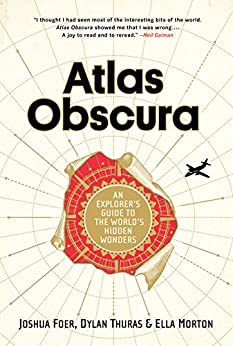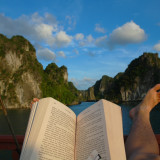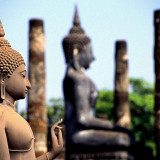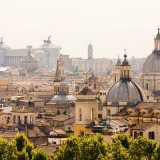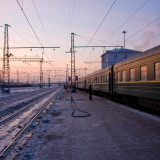Rediscovering Italy Through Wine
When I was 12 my granddad and I often drove through the Italian countryside in his vintage Citroën DS. Destination and direction were of secondary importance: we drove to admire the beauty of the region we came from.
One particularly warm September day remains in my memory. My granddad and I were cruising through the Langhe in northern Italy. The Langhe is a region of hills, vineyards, and castles in Piedmont. The region is well known for its wines, cheeses and white truffles. The Langhe has been declared a UNESCO World Heritage region.

At dusk, the dark silhouettes of the Alps cast long shadows along the foothills. Like silent guardians, they seem to protect and preserve the unique beauty of the Langhe from the outer world. Credit: Wikipedia.
The landscape is truly impressive. Medieval burgs perch on high hills overlooking vertiginous vineyards that disappear into the shadowy valleys beneath. Grape vines cling to the earth as if attempting not to fall down the steep slopes; an epic performance of survival.
My granddad was a traditional man with a passion for vintage cars, politics, and wine. As the landscape flashed by, he explained the history of the vineyards along the way.
“Here is where Barolo is produced. It’s one of the most prestigious wines in the world” my granddad said pointing out the window.
When I asked him why the wine was such a big deal, he pondered it carefully, choosing the best words. Then he turned to me:
“A bottle of wine contains a story. Imagine what hard work it is to produce wine from those vineyards down there. You see how steep they are? The wine contains everything: the smell of this place, the rough nature of these hills, and the fatigue of its vintner. A bottle of wine mirrors its place of origin.”
He tried to explain this to me:
“I will give you an example: white truffles are produced in the Langhe. They are the most sought-after truffles in the world. Now, sniff a glass of Barolo: it does smell of truffles. The vines and the truffles grow side by side. They share the same soil. The Langhe is different from, say, Tuscany. The two regions have very different ways of producing wine. There is no Italian frivolity here when it comes to winemaking. It’s almost a religious thing and the result is that the wines are much sterner. They contain none of the typical Italian ease and openness. They can be too refined for some tastes, but I think they are absolutely stunning. The people here are different, therefore the wines are different. So you see, wine is a storyteller for its land.”
At the age of 12, I didn’t fully appreciate this explanation. It wasn’t until years later while living abroad in Canada that I would come to understand the wisdom my granddad shared with me that warm September day.
On one particularly bone-chilling winter afternoon in Canada, I craved some of southern Europe’s warmth. I missed my home and my family. I couldn’t afford a flight home, but I could have a taste of Italy in the bottle of Barolo I had bought earlier that day: Marchesi di Barolo, La Tradizione, 2009.
I poured the wine into my glass and admired its rich burgundy colour. Then I swirled it. I watched the silky texture twirl around the glass like a soulful dancer. I breathed in its scent and found what I sought: truffles and chestnuts, depth and elegance.

The best time to visit The Langhe is in the Fall when the landscape’s greens turn to reds and golds that seem to glow in the sunset. Credit: Cristiano Berta.
My thoughts floated back to that afternoon with my granddad, 6,000 kilometres and 15 years away. A bottle of wine contains a story, he had said. How right he was. Every story has its characters and settings. Its narratives and expressivity. My wine had it all. It was a story inside a bottle.
I could taste, in every single drop, the sun and soil of its land, the fatigue and passion of its makers, the intriguing austerity those viticultural slopes had conferred to it. For a moment, I could almost picture those majestic hills, cloaked in green vineyards and topped with crumbling castles.

The steeple of a small village called Cisterna set against a sea of vineyards. Credit: Victoria Boyd.
This wine had nothing of the bold excess of other Italian reds. It represented the serious and reserved people of my home: sincere, refined, traditional. Just like my granddad.
For a moment I was lost in the smells and tastes that had transported me back to Italy. I sat up in my chair and looked outside the window: a cold, snowy winter wonderland lay before me. I was back in that chilly Canadian city. I closed my eyes and sniffed my wine glass: castles, rolling hills, and chestnut woods. Once more I opened my eyes and looked outside: Canada. I was impressed and delighted by how the wine could transport me so inexorably to its place of origin.
I would soon discover that every wine represents a place, possesses a unique character, and carries the familiar scents, tastes, people, attitudes and sensations of its land.
Sometimes the most rewarding sensations that come from travelling the world don’t require a plane ticket. My bottle of wine awakened the dormant traveller within me, transporting me back to the place I call home. I have found no better way to satisfy my wanderlust no matter where I am.

For centuries, artists from all over the world have described the landscapes of the Langhe through the prose of their words or the strokes of their brushes. Credit: Cristiano Berta.
Cristiano Berta
Latest posts by Cristiano Berta (see all)
- Rediscovering Italy Through Wine - October 24, 2017
- 5 of the Most Photogenic but Lesser-known Mountains - September 19, 2017
- Frontiers: Gateways to the Unknown - April 4, 2017



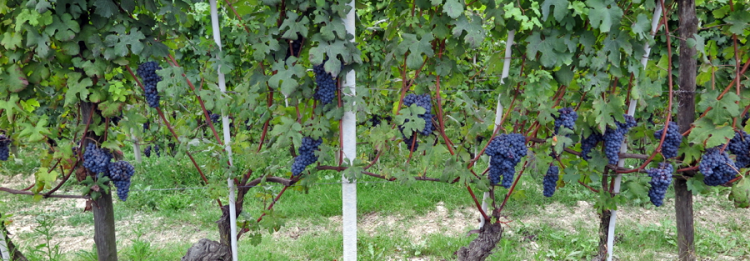
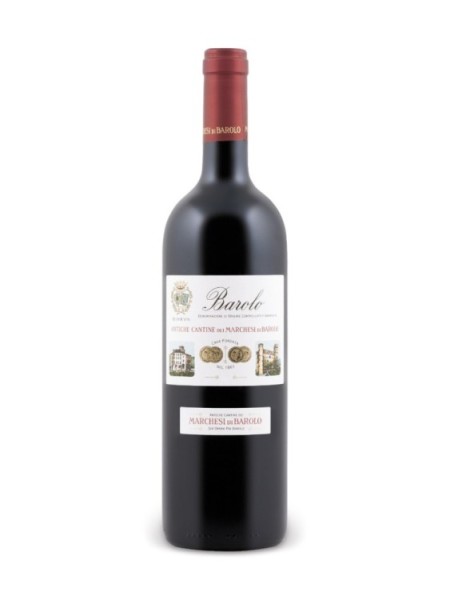



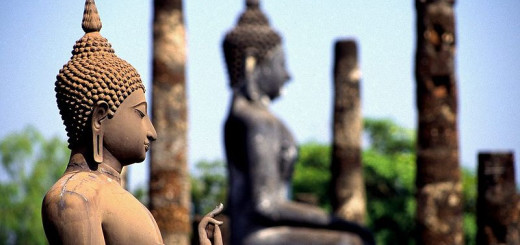

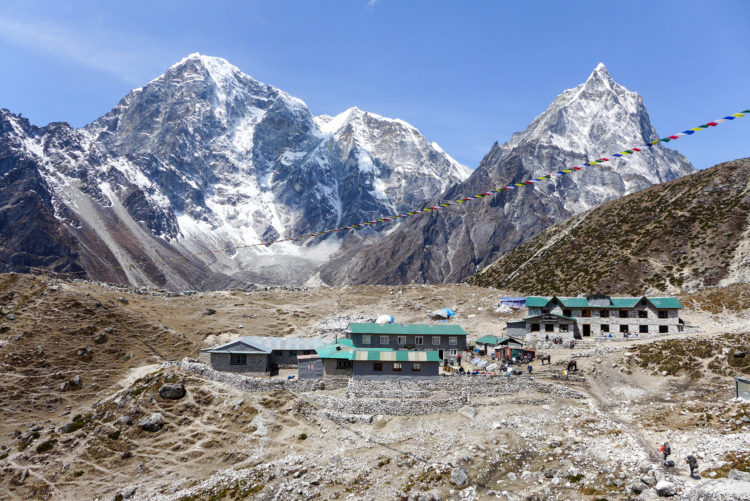 Almost all the tea houses in
Almost all the tea houses in 
